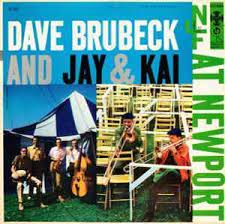
Daily Dose Of Jazz…
Norman Louis Bates was born on August 26, 1927 in Boise, Idaho. His mother was an organist and he was a younger brother of bassist Bob Bates. He played in Jimmy Dorsey’s band for a year in 1945, then with Raymond Scott and Carmen Cavallaro shortly thereafter.
By 1948 he was part of the Dave Brubeck Trio, and the following year performed with Paul Desmond. Norman recorded with Jack Sheedy’s Dixieland Jazz Band in 1950.
After spending four years in the Air Force, Bates played with Wally Rose’s Dixieland Band in 1955 and then replaced his brother Bob in Brubeck’s quartet, playing on multiple albums from Dave Brubeck and Jay & Kai at Newport (1956) onwards. He also recorded with Desmond’s group again in 1956. In 1957 he left Brubeck, and led a trio in San Francisco, California.
Double bassist Norman Bates transitioned on January 29, 2004.
Bestow upon an inquiring mind a dose of a Boise bassist to motivate the perusal of the genius of jazz musicians worldwide whose gifts contribute to the canon…
More Posts: bass,history,instrumental,jazz,music
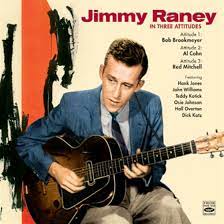
Daily Dose Of Jazz…
James Elbert Raney was born on August 20, 1927 in Louisville, Kentucky.In 1946, he worked his first paying gig as the guitarist with the Max Miller Quartet at Elmer’s in Chicago, Illinois. He was also a member of the Artie Shaw Orchestra and collaborated with Woody Herman for nine months in 1948. He also collaborated and recorded with Buddy DeFranco, Al Haig and later on with Bob Brookmeyer.
In 1967, alcoholism and other professional difficulties led him to leave New York City and return to his native Louisville. Raney lived with Ménière’s disease for thirty years, a degenerative condition that led to near deafness in both ears, although this did not stop him from playing.
In 1954 and 1955, he won the DownBeat Critics’ Poll for guitar. Guitarist Jimmy Raney, one of the most gifted and influential post war jazz guitarists in the world, transitioned from heart failure in Louisville on May 10, 1995.
More Posts: bandleader,guitar,history,instrumental,jazz,music
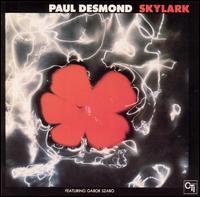
The Quarantined Jazz Voyager
This week while maintaining social distancing and continued mask wearing I’ve selected the 1974 album Skylark saxophonist Paul Desmond featuring Gábor Szabó. It was recorded on November 27~28 and December 4, 1973 at Van Gelder Sturio in Englewood Cliffs, New Jersey. The recording engineer was Rudy Van Gelder, the producer was Creed Taylor, and Don Sebesky wrote all the arrangements. It was released in 1974 on Taylor’s CTI label.
Desmond adapted to the changing times music was facing as did Taylor with his innovative photography used as his covers injected a sense of adventure, a bit of fantasy and a freedom that the 1970s exuded. It’s a change of pace for the saxophonist and a welcomed addition to the label’s stable.
Tracks |53:28- Take Ten (Paul Desmond) ~ 6:08
- Romance De Amor (Traditional) ~ 9:40
- Was A Sunny Day (Paul Simon) ~ 4:52
- Music For A While (Henry Purcell) ~ 6:45
- Skylark (Hoagy Carmichael, Johnny Mercer) ~ 5:21
- Indian Summer (Al Dubin, Victor Herbert) ~ 4:00
- Music For A While [alternate take] (Purcell) ~ 5:56
- Skylark” [alternate take] (Carmichael, Mercer) ~ 5:39
- Indian Summer” [alternate take] (Dubin, Herbert) ~ 5:27
- Paul Desmond ~ alto saxophone
- Bob James ~ piano, electric piano
- Gene Bertoncini ~ guitar
- Gábor Szabó ~ guitar (all solos)
- Ron Carter ~ bass
- Jack DeJohnette ~ drums
- Ralph MacDonald ~ percussion
- George Ricci ~ cello
More Posts: adventure,album,club,festival,genius,jazz,museum,music,preserving,restaurant,saxophone,travel
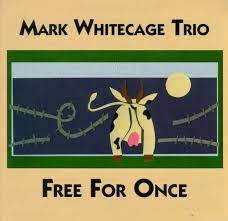
Daily Dose Of Jazz…
Mark Whitecage was born on June 4, 1937 in Litchfield, Connecticut and began playing in his father’s family ensemble as early as age six. In his youth he listened a lot to Roy Eldridge, Ben Webster, Lester Young and Stan Getz. He moved to New York City in the 1970s and was loosely associated with the loft scene with INTERface, a quartet with clarinetist Perry Robinson, bassist John Shea and pianist John Fischer. Fortune smiled and he met Gunter Hampel and ong tours with Hampel’s Galaxie Dream Band became a way of life, which helped him to build up a network outside the US.
In the 1980s, he played with Gunter Hampel’s Galaxy Dream Band, Jeanne Lee, and Saheb Sarbib. After touring solo in Europe in 1986, he put together two bands as a leader, Liquid Time and the Glass House Ensemble. By the Nineties he was releasing his first album with Liquid Time which was chosen by Cadence Magazine as one of the year’s best albums.
He worked in the Improvisers Collective from 1994, and began releasing albums on CIMP in 1996. Late in the decade he worked with Anthony Braxton, including in performances of Braxton’s opera, Trillium R. He also played with William Parker, Perry Robinson, Joe Fonda, Dominic Duval, Joe McPhee, Steve Swell, Richie “Shakin'” Nagan and Sikiru Adepoju.
His marriage to clarinetist Rozanne Levine led to him performing together with Perry Robinson in a trio called Crystal Clarinets. Alto saxophonist and clarinetist Mark Whitecage, who recorded fifteen albums as a leader and another 60 as a sideman, transitioned on March 7, 2021.
More Posts: clarinet,history,instrumental,jazz,music,saxophone
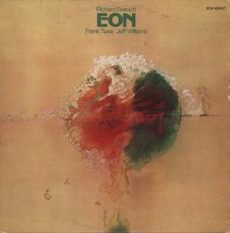
Daily Dose Of Jazz…
Richard Alan Beirach was born on May 23, 1947 in New York City, New York and initially studied both classical music and jazz. While still attending high school, he took lessons from pianist Lennie Tristano. He later studied at the Berklee College of Music, however, after one year he left and began attending the Manhattan School of Music. While there, he studied with Ludmilla Ulehla.
In 1972, graduating from the Manhattan School of Music he took with him a Master’s Degree in Music Theory and Composition. Beirach’s style is influenced by Art Tatum, Bill Evans, McCoy Tyner, and Chick Corea along with his earlier classical training and many touches of his individualism all its own.
He recorded 57 albums as a leader and as a sideman with George Adams, John Abercrombie, John Scofield, Chet Baker, Dave Liebman, Jeremy Steig, Steve Davis, Laurie Antonioli, and the Ron McClure Trio he recorded 17. Pianist and composer Richie Beirach continues to perform, compose and record.
More Posts: bandleader,composer,history,instrumental,jazz,music,piano





